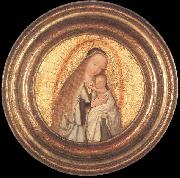Wholesale Oil Painting No Minimum |
|||||||||||
|
|
|||||||||||

|
|||||||||||
|
|
|
||||||||
MASSYS, QuentinFlemish Northern Renaissance Painter, ca.1465-1530 Quentin Massys, also spelled Matsys or Metsys, was born in Louvain, the son of a blacksmith. He is traditionally thought to have been trained in that craft by his father. Art in Louvain while Massys was growing up was dominated by Dirk Bouts. Massys became a member of the painters' guild in Antwerp in 1491 and died there in 1530. He represented a current of painting that flourished in Antwerp at this time of its sudden new prosperity. Erwin Panofsky (1953) described this trend, "archaism of around 1500," as "a prelude to, in fact a fact of, the Renaissance in Netherlandish painting," which prevailed in the southern Netherlands. The monumental Enthroned Madonna (Brussels), an early work by Massys, has features recalling both Robert Campin and Jan van Eyck. The central panel of Massys' imposing St. Anne Altarpiece, or the Holy Kinship (Brussels), which was commissioned for the church of St-Pierre in Louvain in 1507 and signed and dated 1509, has a prototype in the Holy Kinship of Geertgen tot Sint Jans. Even the physical types and costumes in Massys' version refer to Geertgen's. But Massys placed his rhythmically balanced figure groups in a domed, arcaded loggia that in architectural style appears to be reaching for a Renaissance vocabulary it cannot quite attain; certainly the architecture evokes a later period than that represented by the Gothic throne of the Enthroned Madonna. The calm and restraint of the St. Anne Altarpiece are replaced by heightened emotional expression in the next important painting by Massys that can be firmly dated, the Deposition triptych (Antwerp). This was commissioned in 1508 by the guild of joiners in Antwerp for their chapel in the Cathedral; Massys completed the composition in 1511. It was inspired by Rogier van der Weyden's great Deposition, which was in the church of St-Pierre in Louvain in Massys' time, and also quotes from Rogier's Entombment. Massys painted genre subjects, possibly with emblematic meaning, such as A Money Changer and His Wife, which belonged to a Netherlandish tradition that maintained its popularity right through the 17th century. In portraiture he made significant contributions. His pair of portraits of Erasmus and Petrus Aegidius, painted in 1517 for Sir Thomas More, set the pattern for representations of the scholar in his study. |
||||||||
|
|
||||||||
Virgin with the Child
Virgin with the Child Painting ID:: 63978 |
22,5 cm Rockox House, Antwerp Around 1500, when the port of Antwerp began to emerge as the capital of north European trade, it also became a cultural melting pot. All manner of artists flocked into the town on the Scheldt. One of these was Quentin Massys from Louvain, who registered as a painter in the St. Lucas Guild in 1491, and is regarded as the founder of the Antwerp School which was soon to topple the hegemony of the School of Bruges. He remained faithful to the Flemish tradition, although the sfumato in the background of some of his landscapes shows that he was familiar with the work of Leonardo da Vinci. He is usually regarded as a painter of monumental works, and rightly so, but he also painted smaller scale scenes with figures. This is hardly surprising, since his technique had its sources in miniature paintings. The Holy Virgin with the Child Jesus, a small tondo, bears witness to the attention the master paid to sensitive, finely detailed drawing to express the tender movement of the form, and the subtle use of colour to convey the essence of a variety of textures. , Artist: MASSYS, Quentin , Virgin with the Child , 1451-1500 , Flemish Form 22,5 cm Rockox House, Antwerp Around 1500, when the port of Antwerp began to emerge as the capital of north European trade, it also became a cultural melting pot. All manner of artists flocked into the town on the Scheldt. One of these was Quentin Massys from Louvain, who registered as a painter in the St. Lucas Guild in 1491, and is regarded as the founder of the Antwerp School which was soon to topple the hegemony of the School of Bruges. He remained faithful to the Flemish tradition, although the sfumato in the background of some of his landscapes shows that he was familiar with the work of Leonardo da Vinci. He is usually regarded as a painter of monumental works, and rightly so, but he also painted smaller scale scenes with figures. This is hardly surprising, since his technique had its sources in miniature paintings. The Holy Virgin with the Child Jesus, a small tondo, bears witness to the attention the master paid to sensitive, finely detailed drawing to express the tender movement of the form, and the subtle use of colour to convey the essence of a variety of textures. , Artist: MASSYS, Quentin , Virgin with the Child , 1451-1500 , Flemish Form |
|||||||
|
CONTACT US |

